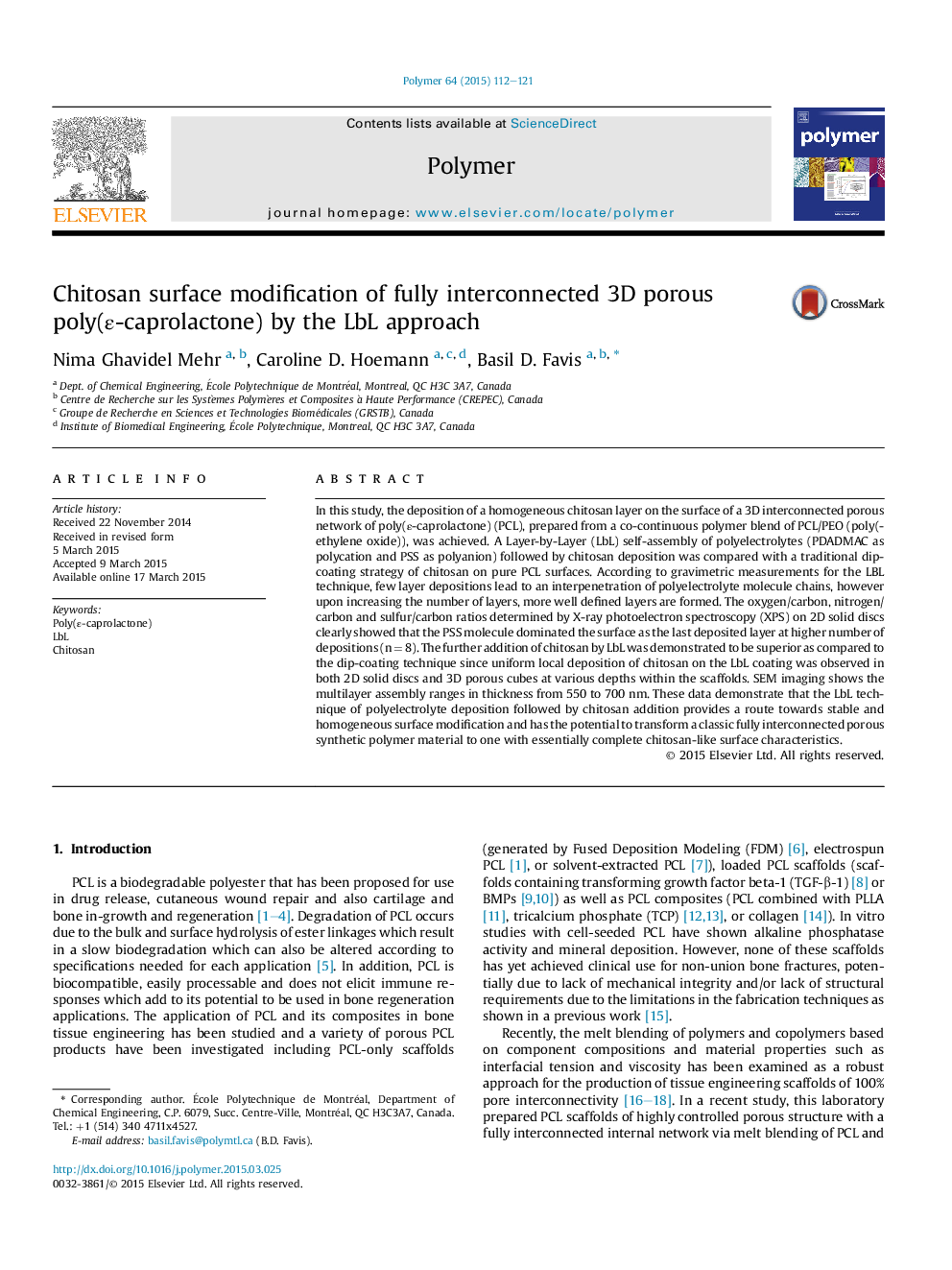| کد مقاله | کد نشریه | سال انتشار | مقاله انگلیسی | نسخه تمام متن |
|---|---|---|---|---|
| 5180436 | 1502542 | 2015 | 10 صفحه PDF | دانلود رایگان |

- This paper presents for the first time the deposition of a chitosan layer on a porous PCL construct via LbL surface deposition of polyelectrolytes.
- While dip coating fails in the deposition of a homogeneous chitosan layer, an LbL protocol can stably immobilize chitosan on the surface of the PCL.
- Three regions are detected according to the number of layers: a surface preparation region; layer buildup; and a more well-defined layer region.
- The uniformity of chitosan deposition is assessed at all levels and local positions inside the 3D porous cubic PCL structures by using XPS and SEM.
- A microscopically rough coating assembly ranging in total thickness from 550 to 700 nm was detected which appears to be mainly related to chitosan.
In this study, the deposition of a homogeneous chitosan layer on the surface of a 3D interconnected porous network of poly(ε-caprolactone) (PCL), prepared from a co-continuous polymer blend of PCL/PEO (poly(ethylene oxide)), was achieved. A Layer-by-Layer (LbL) self-assembly of polyelectrolytes (PDADMAC as polycation and PSS as polyanion) followed by chitosan deposition was compared with a traditional dip-coating strategy of chitosan on pure PCL surfaces. According to gravimetric measurements for the LBL technique, few layer depositions lead to an interpenetration of polyelectrolyte molecule chains, however upon increasing the number of layers, more well defined layers are formed. The oxygen/carbon, nitrogen/carbon and sulfur/carbon ratios determined by X-ray photoelectron spectroscopy (XPS) on 2D solid discs clearly showed that the PSS molecule dominated the surface as the last deposited layer at higher number of depositions (n = 8). The further addition of chitosan by LbL was demonstrated to be superior as compared to the dip-coating technique since uniform local deposition of chitosan on the LbL coating was observed in both 2D solid discs and 3D porous cubes at various depths within the scaffolds. SEM imaging shows the multilayer assembly ranges in thickness from 550 to 700 nm. These data demonstrate that the LbL technique of polyelectrolyte deposition followed by chitosan addition provides a route towards stable and homogeneous surface modification and has the potential to transform a classic fully interconnected porous synthetic polymer material to one with essentially complete chitosan-like surface characteristics.
Journal: Polymer - Volume 64, 1 May 2015, Pages 112-121